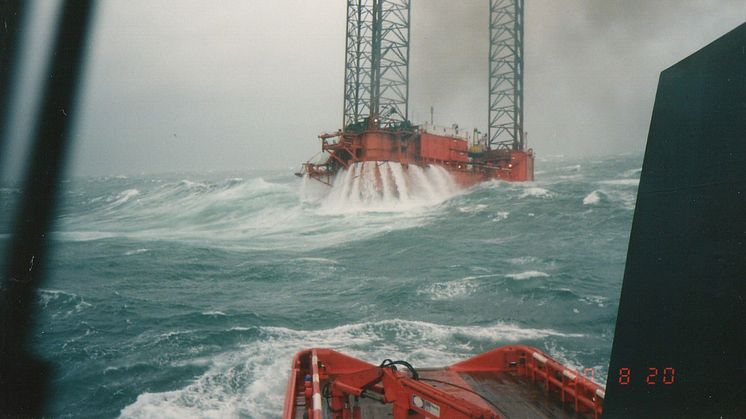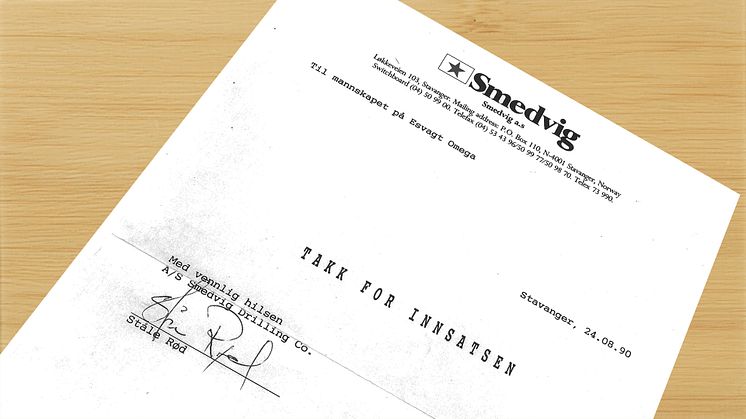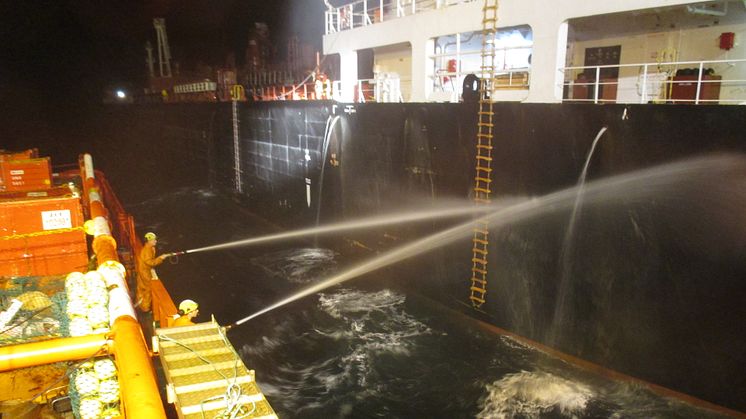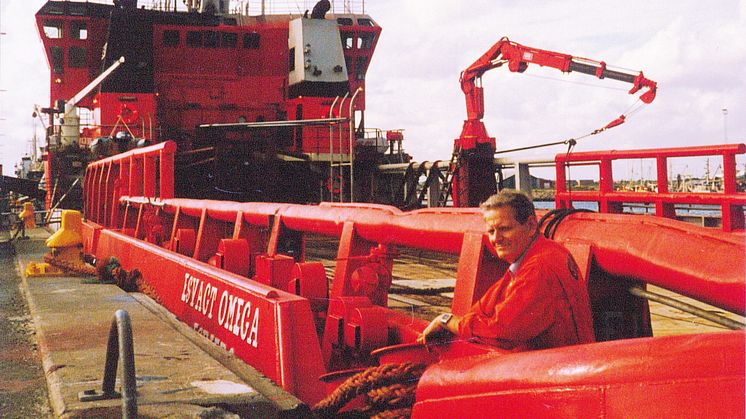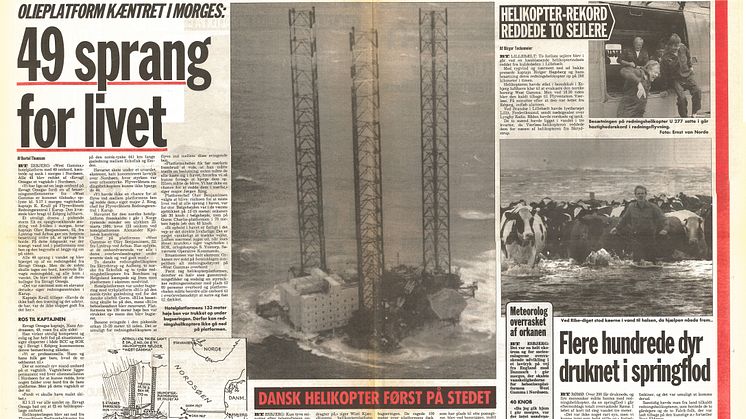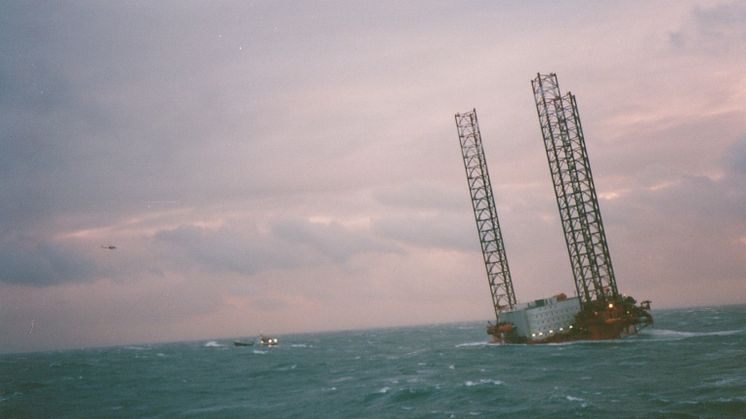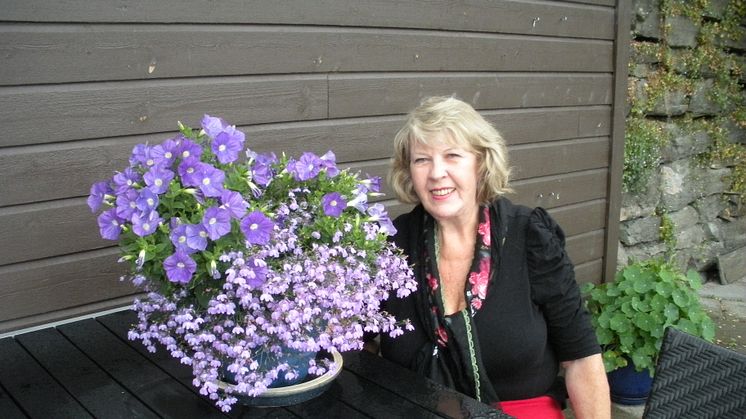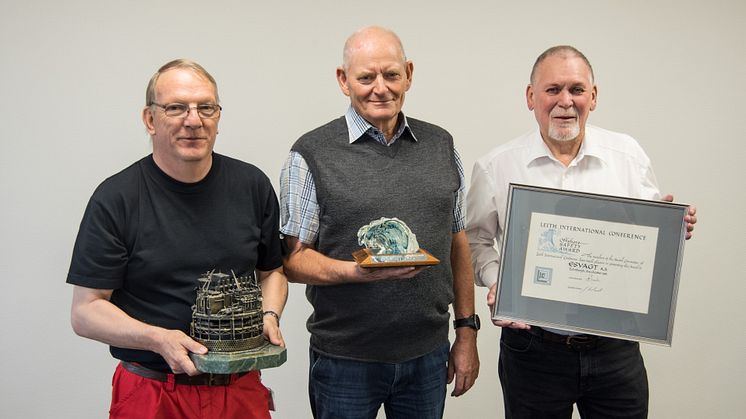
Press release -
West Gamma 25 years on: The rescue operation that set the future for ESVAGT
On the night of the 21st of August 1990, ESVAGT rescued 46 people from the capsized accommodation platform, West Gamma. An operation that proved to be pivotal for ESVAGT.
The 21st of August 2015 marked the 25th anniversary for what could have been one of the biggest disasters in the offshore industry.
Instead, the day marks the ESVAGT’s legitimacy and competence as supplier of safety and support at sea.
“We were already a well-established company back then,” says Ole Andersen, then Managing Director for ESVAGT:
“But there is no doubt that West Gamma changed something. There is an ESVAGT before West Gamma and an ESVAGT after,” he says.
Standby vessels justified their worth
Before West Gamma, standby vessels had not been a particular success in saving lives. When the Alexander Kielland keeled over in 1980 with 212 men on board in the Norwegian sector, none of the only 89 survivors were rescued by a standby vessel.
”The feeling from many sides was that rescue helicopters were the only thing you could rely on. We thought otherwise at ESVAGT, and at West Gamma the rescue helicopters were unable to make a difference. This was partly because the helideck on West Gamma was damaged and because the platform legs were moving violently. The helicopter could merely illuminate what was happening below. This was also an absolutely vital function but it was the standby vessels and the FRBs that made the difference,” says Ole Andersen:
”West Gamma proved that the standby vessels that we operated had a future,” he says.
Learned a great deal
After the successful operation, two Norwegian and two English delegations came to Esbjerg:
“The wanted to know how we could sail FRB in that weather when no-one else could. After going through all the details of the operation, all four delegations came to the same conclusion: the simplicity and quality of the equipment coupled with the throrough training – and in particular the training that people gain by changing crew at sea – were crucial for vessel operations in extreme weather,” says Ole Andersen.
For ESVAGT, the rescue was not only an achievement in itself; it was also a real-life training situation from which we could gain invaluable learning.
“We learnt an enormous amount about ourselves and about rescue operations in the conditions we worked in that night. Some of the standards that we at ESVAGT hold dear today were born from what we learnt at West Gamma,” says Ole Andersen.
Changes to ESVAGT after West Gamma
- During the rescue operation, the crane bent when lifting the FRB that was full with people we had rescued, crew and water. The requirement for 25-30 tons per metre was raised to 80 tons per metre.
- Various rescue helicopters provided essential illumination at West Gamma. Without them, the rescue operation would have been far harder in the dark sea full with debris from the rig. From then, all vessels were installed with 5,000 W remotely operated projectors. Some of these were donated by Mærsk Olie & Gas.
- The legally required 30 m throw lines in the FRBs are supplemented with 8 m throw lines that are more serviceable.
- The mounting brackets for FRBs were strengthened.
- ESVAGT introduced a safety factor 10: All equipment – hooks, wires, and so on – must be able to withstand 10 times the load they were intended for.
- A new Persons On Board (POB) registration system was devised by a crew member and fully developed by ESVAGT to fill the need for accounting for a person from West Gamma. This person had though already been rescued.
Related links
Topics
Categories
ESVAGT is a dedicated provider of safety and support at sea, founded on an experienced and well-trained offshore crew and unmatched rescue capabilities.
We support the offshore Oil & Gas industries with a wide range of specialized services: Standby, Emergency Response and Resque Vessels (ERRV), Oil spill response, Firefighting, Tanker assists, Rig moves, Supply services and Interfield transfer of cargo and personnel.
In 2010, ESVAGT brought the dedicated offshore wind Service Operation Vessels (SOV) to the market. The SOVs provide accommodation for up to 40 technicians, storage for small turbine parts and a workshop, plus personnel and equipment transfer capabilities by either Walk-to-Work gangway system or Safe Transfer Boats.
ESVAGT was founded in 1981 and has a fleet of more than 40 vessels and more than 900 employees on- and offshore.


